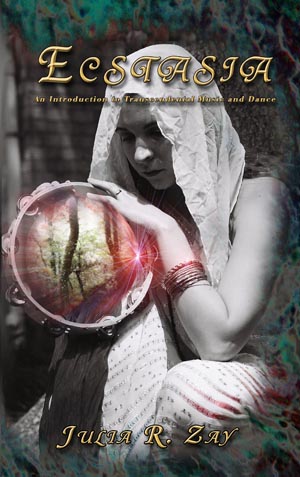
Before you grab this book eager to dance Roman-inspired steps of trance magic, you need to know the following: first, Ecstasia is created as a way of building upon the Nova Roma neopagan reconstructionist religion and is definitely anchored in a Roman context. Second, this anchoring as a Roman reference may here and there results in a few archaic concepts. Third, when it comes to dance practice, Julia Zay knows what she’s doing.
The steps are the invention of Zay based on archetypes common in ancient Rome. This particular form of trance-dancing is used by celebrants of Nova Roma and the terms, archetypes and sometimes arbitrary rules all have an ancient Roman/Latin context.
If you’re willing to overlook all the tradition specific information, what you’ve got is a handbook by a practiced priestess. Along with helping you spot and unplug any drama queens that make trance rituals more difficult, Zay offers excellent details on safely bringing people in and out of trance, how to know if the ritual trance and possession is the real deal and tips for taking care of the body so that you and those you work with are prepared for physical trancing. All this information is accompanied by lovely photographs of a dancer illustrating the archetypal body postures, which does help greatly when you’re haunted by the question “Am I doing this right?”
Zay also gives suggestions for cultivating musicians for ritual work, an area much needed and much neglected by other authors involved in participatory rites. While her perspective on trance music is a bit different, that it’s discussed at all is a valuable addition to the pool of ritualistic knowledge.
While not a first choice book on trance and ecstatic ritual, this book certainly should go to anyone who wants to build expertise on the subject. The rarity of Nova Roma published materials alone makes it worthy of addition to a broad library.
~review by Diana Rajchel
Author: Julia Zay
Megalithica Books 2008
pp. 204, $21.99
